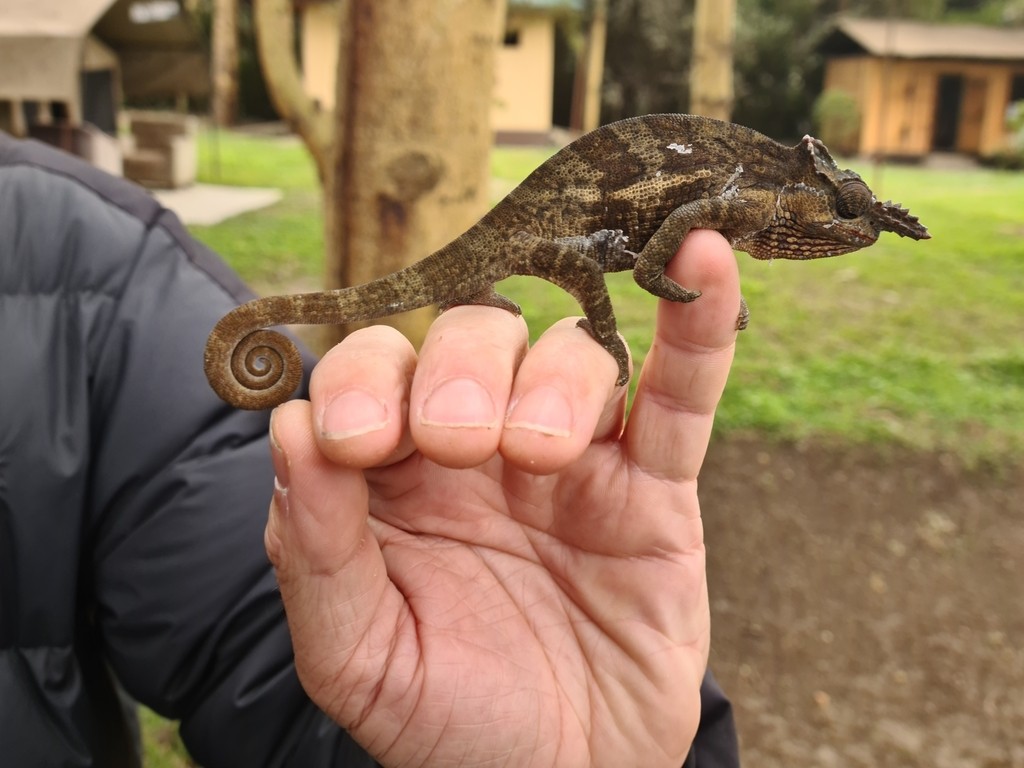Kilimanjaro two-horned chamaeleon
A species of Kinyongia Scientific name : Kinyongia tavetana Genus : Kinyongia
Kilimanjaro two-horned chamaeleon, A species of Kinyongia
Scientific name: Kinyongia tavetana
Genus: Kinyongia
Content
Description General Info
 Photo By ryanweakley , used under CC-BY-NC-4.0 /Cropped and compressed from original
Photo By ryanweakley , used under CC-BY-NC-4.0 /Cropped and compressed from original Description
Kinyongia tavetana (common names: Kilimanjaro two-horned chameleon, Dwarf Fischer's chameleon) is a chameleon in the genus Kinyongia. It is native to southern Kenya and northern Tanzania. Its type locality is Mount Kilimanjaro, but it is also known from Chyulu Hills and Mount Meru to the Pare Mountains. Until 2008, it was widely confused with K. fischeri, but the ranges of the two species do not overlap.
General Info
Lifespan
10-12 years
Diet
Kilimanjaro two-horned chamaeleon primarily subsists on a diet of invertebrates, with a particular preference for insects. It uses its long, prehensile tongue to capture prey, showcasing a privileged affinity for arthropods like crickets and spiders.
Appearance
Kilimanjaro two-horned chamaeleon is a medium-sized chameleon known for its distinctive horn structure. It possesses two rostral horns that protrude from its snout and a hood-like ridge over its eyes. This reptile exhibits sexual dimorphism, with males bearing longer horns than females. Their slightly granular skin trades in green, focusing primarily on dark green and bright green, occasionally accented with touches of yellow or white.
Behavior
Kilimanjaro two-horned chamaeleon is a primarily arboreal and diurnal species that exhibits a solitary lifestyle, except during the mating season. They express unique territorial behavior by using chromatic and morphological changes. Kilimanjaro two-horned chamaeleon's survival in natural habitat is aided by their ability to adjust coloration, providing camouflage against predators.
Population
Decreasing